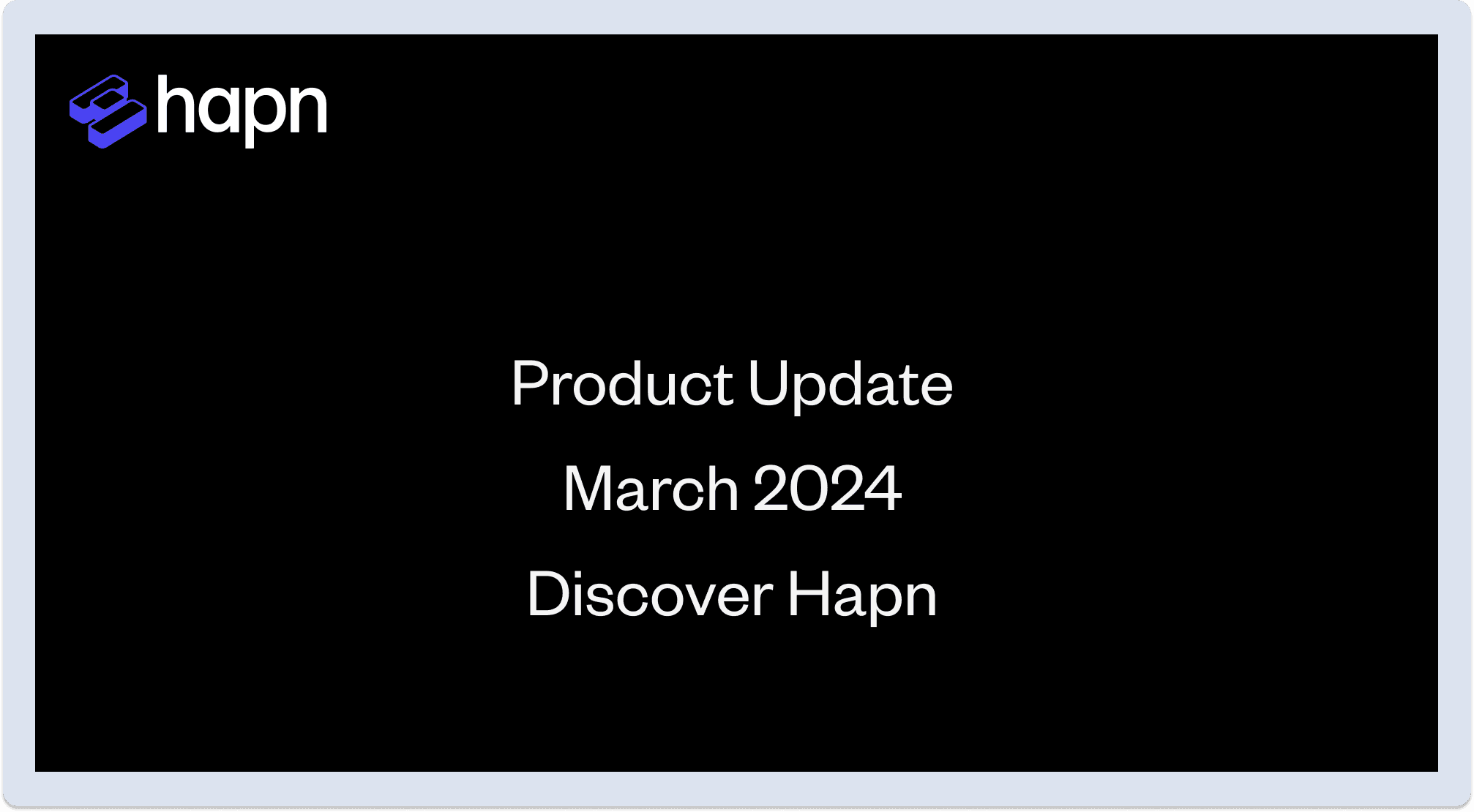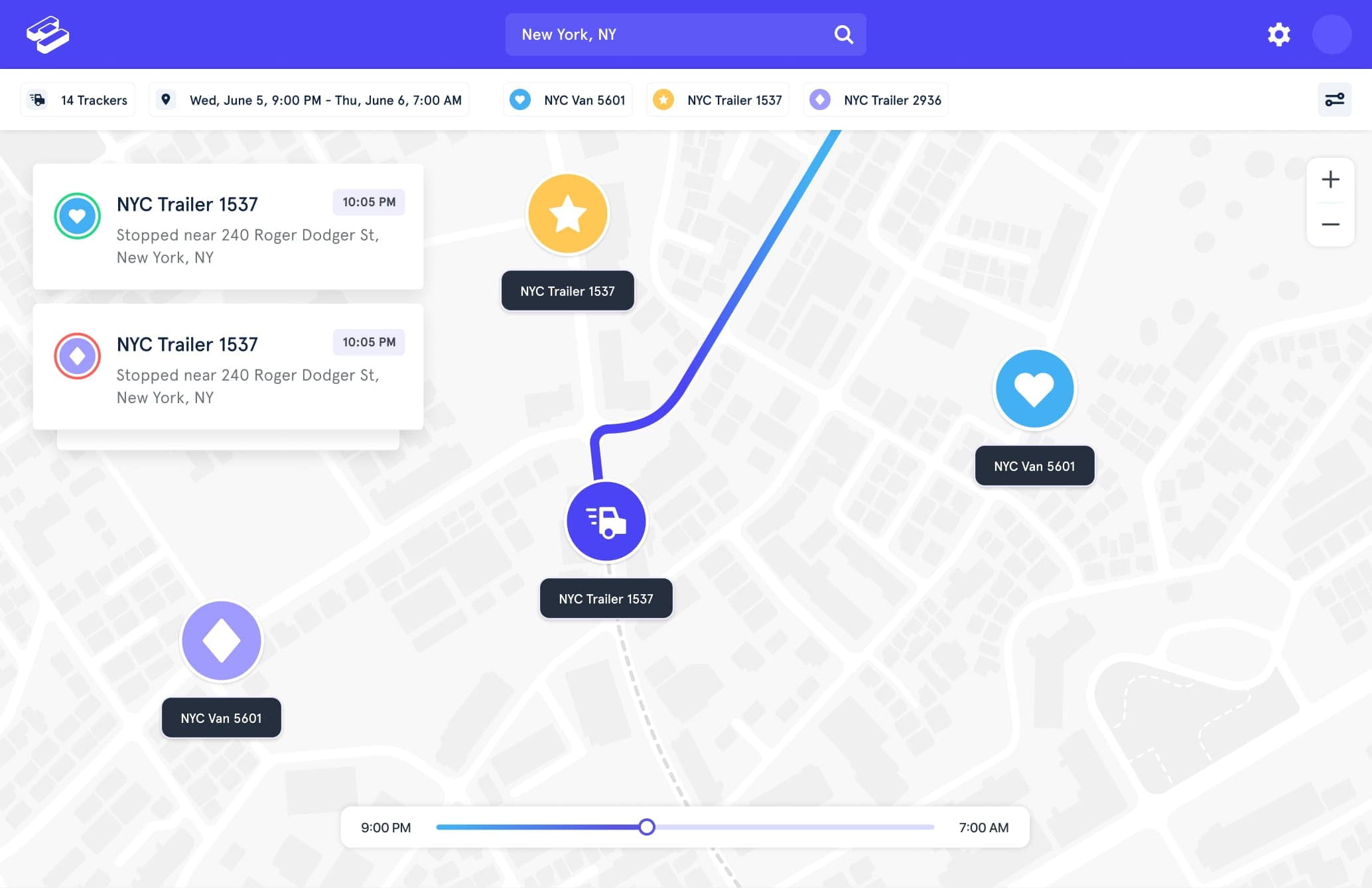Tracking assets is an essential business function that’s needed for the oversight of inventory and equipment. This activity minimizes loss, promotes optimal use, and leads to more efficient spending. While tracking methods may vary (based on company needs and asset type), the core principles and strategies remain consistent.
It’s vital to know that there’s value in tracking assets. According to the Association of Equipment Management Professionals, companies that effectively track their assets have 10-20% lower equipment rental costs and 15-35% lower equipment maintenance and repair costs. These are numbers that can help the bottom line of any business.
But asset tracking needs to be tailored to what you’re trying to achieve. TJ Chasteen, Hapn Product Manager, points out, “One of the key things when implementing a GPS system is to set core goals. This will help you know exactly what to do with the new technology.”
He adds, “If you are trying to prevent theft, you will use different features than if you want to track active hours. A targeted approach will lead to more specific usage and higher adoption from your teams.”
This comprehensive guide will cover everything you need to know about implementing an asset-tracking program for your business or organization.
Define Your Assets
Let’s first define what an asset is. In the broadest terms, an asset is any possession or resource that has value. Individuals have real estate, vehicles, cash and retirement accounts, and collectibles. Businesses own assets such as property, equipment, inventory, cash accounts, accounts receivable, and intellectual property. For this article, we’ll focus on company assets, most of which are physical.
What Assets Should You Track?
The first step in creating an asset-tracking program is identifying what items need to be tracked. Start by inventorying all current assets and assigning a monetary value to each item.
Ideally, you’ll want to track everything, but this can quickly become overwhelming and expensive. Do you really need to know where the stapler and coffee machine are?
In reality, assign a dollar amount threshold that determines what gets tracked and what doesn’t. Alternatively, some other factor (like an expiration) may also play a role in identifying assets that need tracking.
Keep these asset categories in mind:
High-Value
Assets that represent a substantial financial investment should continuously be tracked. These include vehicles, equipment, machinery, electronics, and other big-ticket items. Being watchful about the location and usage of these assets prevents theft, loss, or misuse.
Inventory
Materials that are needed to get work completed should be part of the asset tracking process. For instance, a construction company will want to track lumbar, electrical supplies, and other items moving between a warehouse and a job site. You’ll also want to watch materials you may be holding that belong to clients or other companies.
Mobile
Assets regularly moved between locations should be tracked because they are the most vulnerable to being stolen or misplaced. These items may range from large equipment to portable electronics (like laptops and cell phones).
Shared
Assets that are used by different employees or at multiple locations need tracking. You’ll get a better idea of usage, and there won’t be any finger-pointing if something goes missing. Items that fall in this category include specialized equipment, heavy machinery, and vehicles.
Sensitive
Assets that contain sensitive data should be carefully tracked. Examples include customer records, employee information, proprietary research, and intellectual property. You’re not following the data but the items used to contain these details (such as computers, hard drives, and filing cabinets).
Fixed Assets
Fixed assets are tangible assets that a company buys for long-term use to support its operations. Fixed assets have a useful life of more than one accounting period and are not purchased for the intent of resale.
Land and buildings are part of this category, but we’ll presume you know where these items are located. Other fixed assets include:
- Machinery and equipment
- Furniture and fixtures
- Vehicles
- Office equipment like copiers and printers
- Computers and peripherals
- Servers and network equipment
- Telecom equipment
An accounting professional can advise on what qualifies as a fixed asset and the implications for taxes and depreciation.
The Technologies Behind Asset Tracking
There are many methods used to track assets. At its most basic, a simple hand-written or spreadsheet system may work for some companies without much to follow. However, complex businesses will rely on one or more forms of automated asset tracking. The technology that’s used depends on budget, needs, and the number of tracked items.
Barcode Tracking
Barcode labels are a simple way to tag and identify assets. A barcode scanner can rapidly call up asset details from an inventory database or help record adding a new item into the system. Among all the technological solutions, barcodes are the least expensive to implement. Still, you’ll need line-of-sight access to the tags, and there’s no option for real-time location information.
QR Code Tracking
Think of QR code tracking as an off-shoot of barcode tracking. Each asset gets a unique code that a mobile device or dedicated device can scan. This method is ideal if workers already have a smartphone for other tasks.
RFID Tracking
RFID (radio frequency identification) technology uses tags automatically detected and read by receiving scanners. There’s no need for line-of-sight access, and you can get real-time location information within the limited range of the system (up to a few hundred yards). RFID tracking is particularly useful in warehouse and equipment yard scenarios.
NFC Tracking
NFC (near-field communication) tags operate like RFID systems but are for close-proximity scanning (think inches, not feet or yards). NFC tags are tapped by a mobile device to retrieve asset information.
GPS Tracking
Assets (like vehicles and heavy equipment) that are on the move can benefit from GPS tracking. Thanks to a sophisticated network of satellites and cellular technology, users can locate assets in real-time, learn location history, and create geofences for alerts about the entry and exit of predefined areas. Device options include small battery units that can be easily moved between vehicles or hard-wired units that are more secure.
Asset Tracking vs. RTLS: Understanding the Difference
Asset tracking is sometimes confused with RTLS (real-time locating systems), but each concept is separate. Asset tracking covers managing and monitoring the location data of each asset. RTLS refers to the technologies used to locate assets (and sometimes, people) actively. RFID, NFC, and GPS are examples of these systems. An RTLS system generates the data needed for asset tracking.
Put another way, asset tracking manages the data and business processes around tracking assets, while RTLS handles locating the items.
How Asset Tracking Differs from Inventory Management
This is a good time to explain what separates asset tracking from inventory management. It’s easy to mix these terms. Asset tracking involves monitoring the use and movement of assets (like vehicles and equipment) with unique identifiers. On the other hand, inventory management refers to quantifying stock levels of items that typically don’t have unique identifiers (although some high-value inventory items may benefit from asset tracking techniques).
Think of inventory management as overseeing materials and goods that are at your business for a limited period, while asset tracking manages more permanent resources (such as vehicles and equipment). Asset tracking assigns individual IDs to trace specific assets, but inventory management looks at goods as fungible (meaning an item that can be replaced with something identical).
Examples of How to Track Assets
There are limitless ways to track assets, but let’s highlight a few examples.
Track IT Equipment
It’s not unusual for laptops and printers to get moved between offices. Throw in work-from-home scenarios, and tracking becomes even more necessary. A barcode or RFID arrangement is ideal for this type of usage. Devices get scanned whenever a location changes or equipment is assigned to a particular staff person. Periodic audits will help confirm the validity of this data.
Track Tools and Field Equipment
Barcodes or RFID tags may be helpful for tracking hand tools, but more expensive gear and equipment in the field are best tracked through GPS. This technology provides real-time location data and geofencing tools for alerts when assets leave designated areas.
Track Vehicle Fleets
Managing large fleets is difficult enough without knowing the location of each vehicle. GPS tracking provides vital real-time location specifics, usage monitoring, and other vital details. With this data, managers can jump on delivery delays and maximize vehicle use.
Track Shipments
Businesses that transport goods and materials can optimize these deliveries by tracking movements. An RFID solution is ideal inside warehouses, while GPS devices can track shipments from start to finish. An RFID tag or GPS tracker is attached to a pallet, container, or bin, which could be reused with a future shipment.
Track High-Value Inventory
Most inventory can get handled through a stock-level system, but adding tracking to a high-value item can bring extra peace of mind. You may only need a barcode or RFID for this additional assurance, but a GPS device can be especially beneficial in theft recovery.
Track Files and Documents
While not necessarily an asset, sensitive documents and critical paper files can become trackable by adding a barcode or QR code. You’ll know who has what information and establish an oversight trail that can be helpful.
The Benefits of Asset Tracking
Businesses that take an organized approach to asset tracking enjoy numerous benefits:
- Reduces Loss: A comprehensive asset tracking program can minimize items from being lost, stolen, or misplaced.
- Optimizes Use: Equipment doesn’t make money when it goes underutilized. Asset tracking allows a business to maximize its resources by calling attention to items that aren’t being fully used.
- Boosts Efficiency: Quickly locating assets improves operations and avoids wasting staff time in search of missing items.
- Improves Accountability: Tracking company assets promotes accountability and prevents misuse.
- Enhances Recordkeeping: Having centralized records of a firm’s assets makes managing these vehicles, equipment, and tools easier. This is especially helpful for taxes and knowing when maintenance and replacements are required.
- Reduces Costs: Tracking assets means not spending money on unneeded replacements.
- Improves Planning: A better idea of existing assets makes for more informed decisions about future purchases and investments.
Asset Tracking Tips
Setting up an asset-tracking program doesn’t have to be overwhelming. Keep these tips in mind as you get started.
- Don’t try tracking every asset at once. Give priority to items that are the most valuable or more critical to operations. Once these top-tier assets are set up, gradually add other items.
- Choose tracking technology that aligns with your assets. Determine the pros and cons of each system (barcode/QR code vs RFID vs GPS tracking). For instance, the affordability of barcodes can be very appealing, but this technology is worthless if you need real-time monitoring of vehicles and equipment.
- The actual process of tracking assets is only part of the formula. You’ll need to integrate tracking into an asset management system for consolidated oversight.
- Assign responsibility for asset “ownership” to relevant employees. This may involve a single asset manager or department-specific employees.
- Create a culture that promotes asset tracking as second nature. In practical terms, this means getting employees to scan items during the various stages of asset tracking (check-ins, check-outs, maintenance, repairs, location transfers, audits, and end-of-life).
- Tracking data offers a wealth of insightful data. Use this information to create utilization benchmarks (like usage rates and turn time). Then, regularly review this information to improve efficiency and company operations.
Final Thoughts
Technologies like barcodes, RFID, and GPS make asset tracking easier than ever. But there’s more at stake than convenience. Asset tracking enables forward-thinking businesses to improve oversight of valuable equipment, reduce costs, and enhance operational efficiencies.
It all begins by carefully selecting what assets to track and determining how you’re going to do it.
FAQs
What are the benefits of asset tracking?
There are obvious benefits to asset tracking, like being able to easily locate items, preventing loss, and improving utilization. Yet there are more subtle advantages that can also enhance a business. These secondary benefits include increased employee accountability, enhanced record-keeping, and more informed decision-making.
What assets should be tracked?
Keep your tracking efforts focused on high-value or sensitive items that are easy to move. These assets can include vehicles, heavy machinery, equipment, inventory, and even documents and data files. If your business would suffer a loss if a particular item was lost or stolen, then it needs to be tracked.
What asset-tracking technology is best?
The best asset-tracking solution is the one that meets your company’s needs. And it’s not unusual to rely on multiple technologies. Barcodes and RFID tags are ideal for smaller items, while vehicles, equipment, and other high-value gear can be protected by GPS devices.



